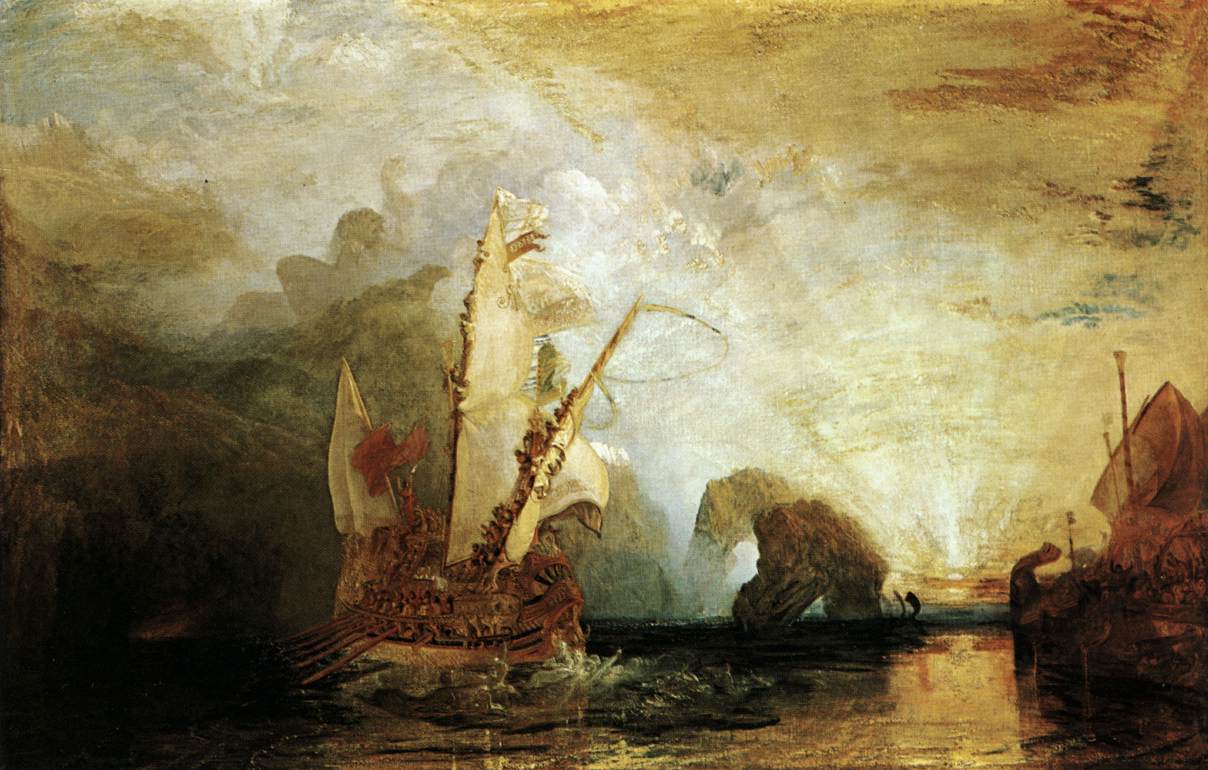Description
Joseph Mallord William Turner's painting "Ulysses Ridiculing Polyphemus" is a masterpiece that captivates viewers with its unique artistic style, masterful composition, and captivating use of color. With an original size of 132 x 203 cm, this painting is a stunning representation of Homer's epic story of the Odyssey.
Turner's artistic style is known for its romantic approach and its ability to capture light and movement in an almost magical way. In "Ulysses Ridicules Polyphemus", we can see how Turner uses loose brushstrokes and gestures to create a turbulent and dramatic atmosphere. Blurred outlines and bold brush strokes bring the scene to life, creating a sense of energy and excitement.
The composition of the painting is equally impressive. Turner has placed Odysseus and his companions in the foreground, while Polyphemus, the giant Cyclops, is in the background. This choice of composition creates a sense of depth and perspective, and also emphasizes the contrast between the smallness of men and the immensity of the Cyclops.
The use of color in this painting is another highlight. Turner uses a palette of vibrant and contrasting colors to convey the tension and drama of the scene. Warm, light tones blend with dark, somber ones, creating a striking visual effect. Also, the use of light is remarkable, as Turner manages to masterfully capture the bright sunlight and the reflection of the water.
The story behind the painting is also fascinating. "Ulysses Ridicules Polyphemus" represents a key episode of the Odyssey, in which Odysseus and his men find themselves trapped in the cave of Polyphemus the Cyclops. To escape, Odysseus gets Polyphemus drunk and then blinds him, angering the Cyclops. Turner manages to capture the moment when Odysseus taunts Polyphemus, adding an element of intrigue and excitement to the painting.
In addition to these more well-known aspects, there are some lesser-known details that are worth mentioning. For example, Turner includes a female figure in the lower right corner of the painting, believed to represent the nymph Galatea, lover of Polyphemus. This detail adds an additional layer of symbolism and complexity to the work.
In short, Joseph Mallord William Turner's "Ulysses Ridicules Polyphemus" is a fascinating painting that combines a unique artistic style, masterful composition, captivating use of color, and epic story. Its original size of 132 x 203 cm allows you to appreciate all the details and the artistry of Turner, making it a truly impressive piece of art.

